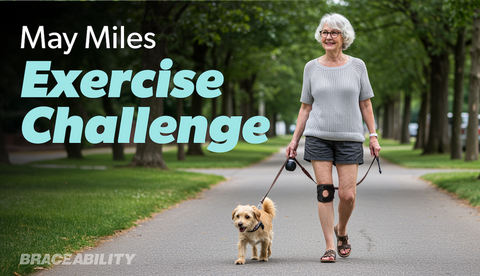Why Sleep Matters in Recovery | Pain Relief Tips for Better Health
Why Sleep Matters in Recovery (& How Pain Disrupts It)
Sleep plays a vital role in tissue repair, hormone regulation, immune response, and lowering inflammation. Poor or insufficient sleep isn’t just a symptom, it can cause more pain. In fact, studies show that people averaging ≤ 7 hours of sleep per night over a sustained period face 1.7× greater risk of musculoskeletal injury than those with healthier sleep habits. PubMed
In postoperative settings, patients with worse preoperative sleep quality had significantly higher rates of moderate-to-severe pain one month out. Frontiers
Because of those feedback loops, small adjustments to how you sleep can make a meaningful difference in your comfort and recovery trajectory.
Optimal Sleeping Positions for Different Injuries
Choosing the right position can dramatically reduce strain and tension on injured tissues. Below are common injury types and suggested postures:
|
Injury / Condition |
Recommended Sleeping Position(s) |
Tips & Modifications |
|
Low back pain / disc injury / sciatica |
Lie on your back with a pillow under knees, or side-lying with knees slightly bent and pillow between knees |
Avoid twisting or curvature in spine; keep hips and shoulders aligned |
|
Shoulder / rotator cuff / AC joint |
Sleep on the unaffected side or on your back with the injured arm supported |
Use a small wedge pillow or rolled towel under the elbow to prevent the arm from collapsing inward |
|
Hip or groin strain |
Lie on the unaffected side, with a pillow between knees; or supine with pillow under knees |
Avoid adducting the injured leg across midline |
|
Neck pain / cervical injury |
Back sleeping with a contoured cervical pillow or side sleeping with a pillow that fills the gap between head and shoulder |
Keep your neck in neutral alignment (not propped too high) |
|
Plantar fasciitis / foot/ankle injury |
Back sleeping with foot supported (not hanging off the mattress) or slight elevation with a pillow |
Avoid plantar flexed (pointed) foot positions if possible |
General advice: avoid the “fetal” position (curled-up) for most injuries because it tends to stress joints and restrict breathing. Also, side-sleeping is often the most tolerable for many people, as it keeps the spine in a more neutral alignment (especially when knees are separated) News-Medical
Supportive Pillow & Mattress Strategies
Mattress Choices
-
Medium-firm surfaces often provide a good balance of support and contouring.
-
If your mattress is too soft and sags, consider a mattress topper (memory foam, latex, or high-density foam) to restore support.
-
On the other hand, if the mattress is too firm, adding a thin memory-foam or gel topper can reduce pressure points.
Pillar of Support: Pillows and Bolsters
-
Use a body pillow or bolster to hug or support limbs (e.g., between knees, under arms).
-
A cervical contour or adjustable pillow lets you fine-tune height for neck alignment.
-
Wedge pillows (half- or full-size) can gently incline the torso for issues like back pain or acid reflux.
-
Try filling voids: for example, use small rolled towels or cushions under the lower back or beside the hips to prevent unwanted rotation while side sleeping.
Layering for Comfort
-
Use a thin, breathable mattress protector or cover.
-
A removable top layer (e.g. cooling pad) can help with temperature regulation, especially since pain or inflammation can increase sensations of heat or restlessness at night.
-
Rotate or flip pillows regularly so they maintain shape and support.
Bedtime Routine Hacks for Less Pain, Better Sleep
-
Wind-down time of at least 30 minutes
Avoid screens and bright light; do calming activities such as gentle stretching, reading, or deep breathing. -
Bonus tip: Wearing blue light blocking glasses can help you wind down by reducing eye strain and signaling your body that it’s time to rest.
-
Warm (not hot!) soak or shower
Applying heat 30-60 minutes before bed relaxes muscles and can reduce stiffness. Just be sure the heat exposure doesn’t inflame injured tissues. -
Light stretching or mobility work
Gentle, pain-free movement right before bed can ease stiffness and reduce micro-spasms overnight. -
Use ice or cold packs if needed
If inflammation is flaring, briefly applying cold (10-15 minutes) may reduce swelling so it doesn’t wake you up later. -
Pain medication or topical analgesics (if prescribed/approved)
Take as advised so that peak effectiveness lines up with expected morning awakenings. -
Consistent sleep schedule
Going to bed and waking at the same time reinforces circadian rhythms and optimizes restorative sleep. -
Environmental support
-
Keep your bedroom cool (ideally ~65°F or 18-19 °C).
-
Use blackout curtains or an eye mask to block light.
-
White noise machines or earplugs can help mask disruptions.
-
Elevate limbs slightly (e.g. foot of bed) if edema or swelling is an issue.
-
Mindful relaxation or meditation
Practices like progressive muscle relaxation, guided imagery, or gentle yoga nidra can reduce arousal and ease pain-related tension before you drift off.
Spotlight on BraceAbility Solutions for Overnight Comfort
When planning your sleep setup, consider these three BraceAbility solutions, each designed for different injuries or conditions.
1. Plantar Fasciitis Soft Night Sock
This Soft Night Sock from BraceAbility is designed to provide gentle stretching and support to the plantar fascia and Achilles tendon while you sleep. It holds the foot in a mild dorsiflexed position to gently elongate the fascia and prevent contracture overnight, a common source of morning heel pain.
The fabric is soft and stretchable, and the adjustable straps allow you to fine-tune the tension to your comfort level. Many users appreciate that it can be worn comfortably during sleep without feeling overly rigid.
2. Neuropathy Socks
The BraceAbility Neuropathy Socks are engineered to offer mild compression, cushioning, and thermal support to feet and lower legs affected by nerve pain or neuropathy. They use moisture-wicking fabrics and a comfortable seamless design to minimize irritation while providing circulation support.
These socks can help reduce tingling, numbness, or burning sensations that often disrupt sleep in people with diabetic neuropathy, peripheral neuropathy, or other nerve-related foot discomforts.
3. Sciatica Back Pain Brace
This Sciatica Back Pain Brace from BraceAbility focuses compression on the lower back to help ease sciatica and nerve irritation. A key feature is a pocket for hot or cold gel inserts so you can incorporate temperature therapy while wearing the brace
The design balances support with breathability, making it more feasible for extended wear (including overnight), and helps limit micro-movements in the lumbar spine that can trigger flareups.
Rest Easy: Final Thoughts
Quality sleep is one of the most powerful tools for healing, yet it’s often the first thing pain takes away. By creating a supportive sleep setup by choosing the right position, optimizing your bedding, and using gentle nighttime supports, you can ease discomfort and help your body recover more efficiently.
Even small improvements to your sleep routine can reduce inflammation, restore mobility, and boost energy for the day ahead. With the right approach and supportive tools from BraceAbility, restful nights can become a key part of your recovery journey.













